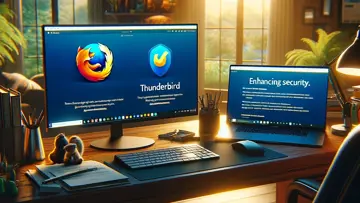Microsoft .NET Framework 2.0: An In-Depth Review of Its Features and Performance
Microsoft .NET Framework 2.0 is a comprehensive software development platform that serves as a core component for building, deploying, and running applications on Windows. As an incremental update over its predecessor, .NET Framework 1.1, version 2.0 introduces numerous enhancements aimed at improving developer productivity, application performance, and the overall security landscape.
The framework provides a robust environment for developing Windows-based applications and web services using languages like C#, VB.NET, and F#. Key features include the introduction of the Common Language Runtime (CLR) version 2.0, improved garbage collection, and support for multiple programming languages under the Common Language Infrastructure (CLI) standards.
Core Features and Improvements
- Enhanced Language Support: The release expands language interoperability, enabling developers to create applications that are easier to maintain and extend through improved compiler features.
- Base Class Library (BCL): The framework enhances its extensive library with new classes, methods, and interfaces that simplify common programming tasks such as file I/O, string management, data access, and XML processing.
- Windows Forms: Offers advanced tools for developing user interfaces with improved rendering performance and support for custom controls.
- ASP.NET: Significant updates to the ASP.NET engine facilitate more productive web development with features like Master Pages, themes, skins, and enhanced data controls.
- Foundation for Web Services: The introduction of the System.ServiceModel namespace and Windows Communication Foundation (WCF) support allows developers to build secure, reliable web services that can communicate over various protocols.
- Configuration Management: Simplified mechanisms for managing application settings enhance deployment flexibility.
Performance and Security Enhancements
The .NET Framework 2.0 improves application performance through optimized Just-In-Time (JIT) compilation and enhanced memory management. The framework's security model is fortified with updated Code Access Security (CAS) policies and stronger cryptography support, providing developers with better tools to secure their applications against threats.
Compatibility and Deployment
The compatibility of applications developed using .NET Framework 2.0 is broadly maintained with earlier versions, easing integration into existing systems. Deployment can be streamlined through setup projects that utilize ClickOnce technology or MSI installers, simplifying updates and user installations.
Development Tools Integration
.NET Framework 2.0 seamlessly integrates with Microsoft's development environments such as Visual Studio 2005, delivering powerful debugging, profiling, and code analysis tools. This tight integration accelerates the development lifecycle and enhances code quality.
Community Support and Resources
The release benefits from extensive community resources including official documentation, tutorials, forums, and third-party libraries. Microsoft’s support channels offer ongoing assistance for troubleshooting issues or implementing complex functionalities.
System Requirements
Running .NET Framework 2.0 requires a Windows operating system compatible with Windows XP SP2, Windows Server 2003 SP1 or later versions. Adequate hardware specifications include a minimum of 128 MB RAM (256 MB recommended) and sufficient disk space for the installation package plus runtime components.
Conclusion
The Microsoft .NET Framework 2.0 marks a significant milestone in Microsoft's developer platform history by offering versatile features that foster application robustness and security. Its extensive library support combined with improved developer tools establishes it as a vital component for enterprise-level software development on Windows environments.
Vue d'ensemble
_Microsoft .NET Framework 2 est un logiciel de Commercial dans la catégorie Développement développé par ® 2006 Microsoft Corporation.
Les utilisateurs de notre application cliente UpdateStar ont vérifié _Microsoft .NET Framework 2 pour les mises à jour 63 fois au cours du dernier mois.
La dernière version de _Microsoft .NET Framework 2 est actuellement inconnue. Au départ, il a été ajouté à notre base de données sur 15/09/2008.
_Microsoft .NET Framework 2 s’exécute sur les systèmes d’exploitation suivants : Windows.
_Microsoft .NET Framework 2 n'a pas encore été évalué par nos utilisateurs.
Installations
avec UpdateStar freeware.
Derniers avis
|
|
AntiCheatExpert
AntiCheatExpert propose des solutions de sécurité de jeu multiplateformes de pointe |
|
|
HP HotKey Support
Augmentez l’efficacité avec la prise en charge HP HotKey |
|
|
Essential Mod Installer
Simplifiez votre expérience de modding avec Essential Mod Installer |
|
Cogent Biometrics Vendor Device Manager
Gestion sans effort des appareils biométriques avec Cogent Biometrics |
|
|
|
WatchGuard Mobile VPN with SSL client
Accès à distance transparent avec WatchGuard Mobile VPN |
|
|
Asistente de soporte y recuperación de Microsoft
Puissant assistant de support et de récupération de Microsoft |
|
|
UpdateStar Premium Edition
Garder votre logiciel à jour n’a jamais été aussi facile avec UpdateStar Premium Edition ! |
|
|
Microsoft Edge
Un nouveau standard en matière de navigation sur le Web |
|
|
Google Chrome
Navigateur Web rapide et polyvalent |
|
|
Microsoft Visual C++ 2015 Redistributable Package
Améliorez les performances de votre système avec le package redistribuable Microsoft Visual C++ 2015 ! |
|
|
Microsoft Visual C++ 2010 Redistributable
Composant essentiel pour l’exécution d’applications Visual C++ |
|
|
Microsoft OneDrive
Rationalisez votre gestion de fichiers avec Microsoft OneDrive |





